The Abbey of Notre Dame des Neiges |
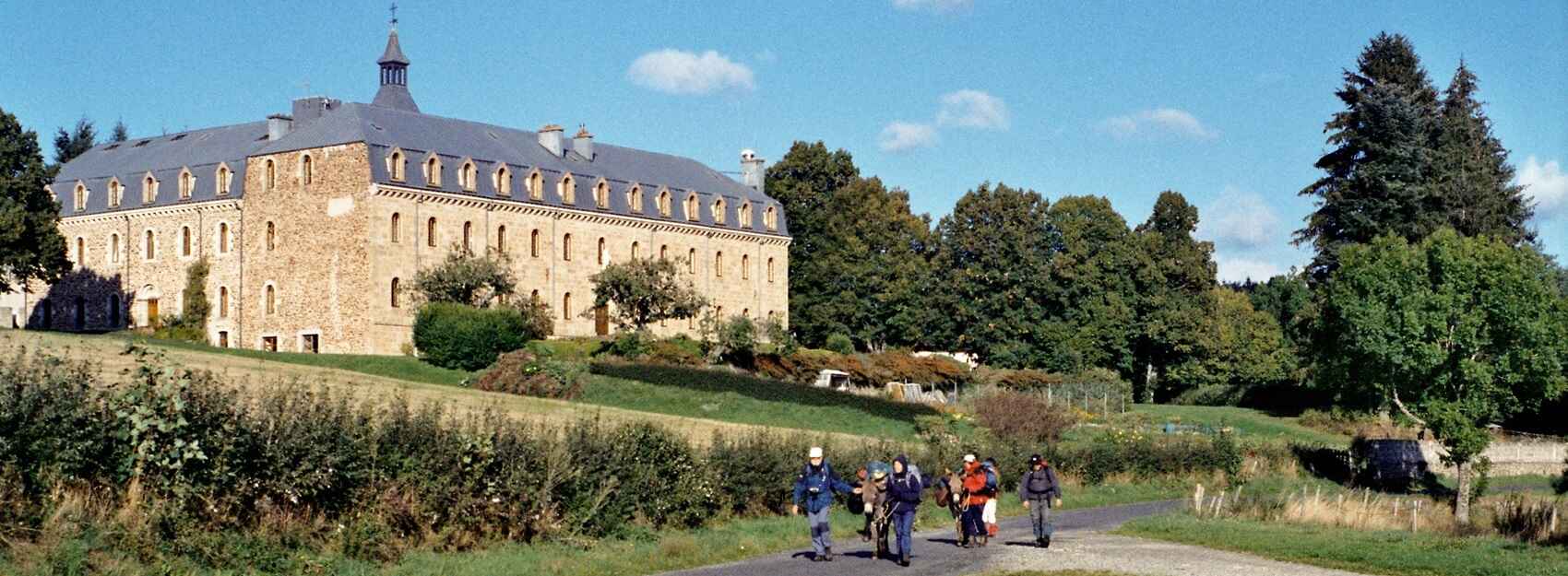
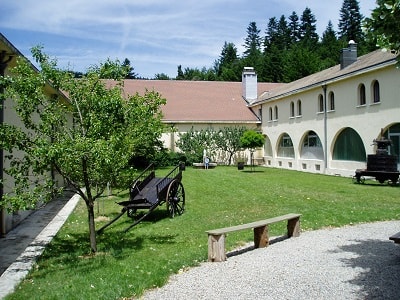 Founded in 1850 by Trappist monks from the Abbey of Aiguebelle at 1100 meters altitude in the Ardeche mountains. It is here that they founded the Abbey of Notre Dame des Neiges, a monastery dedicated to prayer, work, and silence. Life was harsh at the abbey. The monks lived in Spartan conditions, working the land to meet their needs and building their monastery stone by stone. But their faith and perseverance were unshakeable. The abbey quickly became a place of pilgrimage and renewal for Catholics in the region. The beauty of the site, the rigor of monastic life, and the monks' reputation for holiness attracted many visitors.
Founded in 1850 by Trappist monks from the Abbey of Aiguebelle at 1100 meters altitude in the Ardeche mountains. It is here that they founded the Abbey of Notre Dame des Neiges, a monastery dedicated to prayer, work, and silence. Life was harsh at the abbey. The monks lived in Spartan conditions, working the land to meet their needs and building their monastery stone by stone. But their faith and perseverance were unshakeable. The abbey quickly became a place of pilgrimage and renewal for Catholics in the region. The beauty of the site, the rigor of monastic life, and the monks' reputation for holiness attracted many visitors.
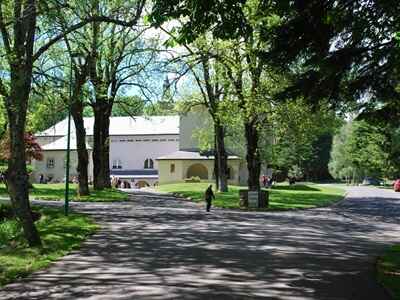 The life of the monks at Notre Dame des Neiges was rooted in prayer, beginning at dawn with the lauds, the first of many prayers that punctuated their daily life. From the morning Mass to the evening vespers, each religious service was an opportunity to gather in communion with God and the community. Far from the idea of passive contemplation, the Cistercian monks were tireless workers. Their day was marked by a multitude of tasks, from cooking to maintaining the land and buildings, as well as raising animals. Their labor was both an act of devotion to the community and a concrete expression of their spirituality. At the heart of monastic life reigned silence, a sacred silence that favored contemplation and communion with God. The monks strove to maintain this silence, speaking only when necessary and reserving verbal exchanges for mealtimes and communal work.
The life of the monks at Notre Dame des Neiges was rooted in prayer, beginning at dawn with the lauds, the first of many prayers that punctuated their daily life. From the morning Mass to the evening vespers, each religious service was an opportunity to gather in communion with God and the community. Far from the idea of passive contemplation, the Cistercian monks were tireless workers. Their day was marked by a multitude of tasks, from cooking to maintaining the land and buildings, as well as raising animals. Their labor was both an act of devotion to the community and a concrete expression of their spirituality. At the heart of monastic life reigned silence, a sacred silence that favored contemplation and communion with God. The monks strove to maintain this silence, speaking only when necessary and reserving verbal exchanges for mealtimes and communal work.
Regular schedules structured the monks' day, symbolizing their commitment to a life of discipline and devotion. Rising at 4:30 am and going to bed at 9:00 pm attested to their willingness to devote long hours to prayer, meditation, and work, thus following the natural rhythm of day and night. The monks' modest and moderate diet, based on two meals a day at noon and at 7:00 pm, reflected their commitment to simplicity and moderation. This practice of partial fasting was also a spiritual discipline, helping them exercise self-control and cultivate gratitude toward God for the blessings of food.
The silence, observed outside mealtimes and community activities, was a distinctive feature of monastic life. This rule of silence promoted concentration, reflection, and personal prayer, creating a space conducive to communion with God and inner listening. The simple and functional habit worn by the monks, consisting of a tunic, scapular, and hood, testified to their renunciation of the vanities of the world and their commitment to modesty and humility. It was also a symbol of their belonging to the monastic community and the Cistercian order.
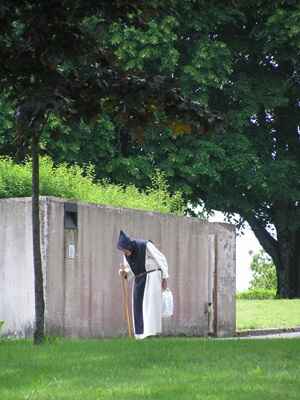 The Cistercian order, a millennia-old monastic tradition
The Cistercian order, a millennia-old monastic tradition
The Cistercian order, founded in 1098 at the Abbey of Cîteaux in Burgundy, stems from a reform of the Benedictine order, advocating a stricter observance of the Rule of Saint Benedict. Since its inception, this Catholic monastic order has distinguished itself by its characteristic values and practices, which continue to mark its communal and spiritual life. Cistercian monks live in isolated monasteries, in communion with nature, adopting a stripped-down lifestyle in harmony with the teachings of the Gospel. They renounce superfluous material goods and content themselves with the bare necessities, wearing simple clothing and nourishing themselves with a modest diet, without meat. Prayer is the heart of the Cistercian monks' life. They follow a rigorous liturgical schedule, punctuated by religious services, particularly lauds, vespers, and compline. In addition to communal prayer, the monks also dedicate time to personal prayer and meditation, thereby fostering their spiritual growth and communion with God.
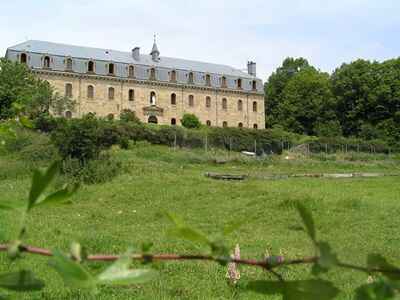 Cistercian monks practice evangelical poverty by renouncing individual ownership of goods. Everything is held in community, and each member of the order contributes according to their means and abilities to the well-being of all. This practice fosters humility, solidarity, and sharing within the monastic community. Cistercian monks consider work to be a sacred act and a means to glorify God. They actively participate in the daily tasks of the monastery, including cooking, cleaning, gardening, and maintaining the buildings. They also engage in agricultural activities, such as raising livestock and cultivation, thus contributing to the community's self-sufficiency and livelihood.
Cistercian monks practice evangelical poverty by renouncing individual ownership of goods. Everything is held in community, and each member of the order contributes according to their means and abilities to the well-being of all. This practice fosters humility, solidarity, and sharing within the monastic community. Cistercian monks consider work to be a sacred act and a means to glorify God. They actively participate in the daily tasks of the monastery, including cooking, cleaning, gardening, and maintaining the buildings. They also engage in agricultural activities, such as raising livestock and cultivation, thus contributing to the community's self-sufficiency and livelihood.
Over the centuries, the Cistercian order has experienced periods of prosperity and decline, but it has managed to preserve its spiritual heritage and monastic tradition. During the Middle Ages, the order founded many abbeys across Europe, thus becoming a pillar of the religious and social life of the time. In the 16th century, the Cistercian order was affected by the Protestant Reformation, leading to the closure or destruction of many Cistercian abbeys. However, the order experienced a revival in the 19th century, with the founding of new abbeys and a renewed interest in monastic life.
Today, the Cistercian order continues to embody the values of simplicity, prayer, poverty, and work, with approximately 2,500 monks and nuns distributed in over 100 monasteries around the world. These Cistercian communities perpetuate the millennia-old tradition of the order, offering places of reflection and spirituality for believers seeking inner peace and communion with God.
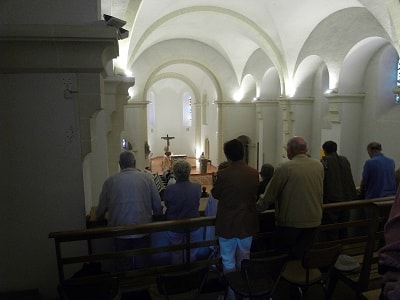 The Abbey of Notre Dame des Neiges belongs to the Cistercian order, founded in the 12th century on the principles of simplicity, prayer, and poverty. The Cistercian monks were recognizable by their simple habit and ascetic lifestyle, testifying to their commitment to a deep and authentic spirituality.
The Abbey of Notre Dame des Neiges belongs to the Cistercian order, founded in the 12th century on the principles of simplicity, prayer, and poverty. The Cistercian monks were recognizable by their simple habit and ascetic lifestyle, testifying to their commitment to a deep and authentic spirituality.
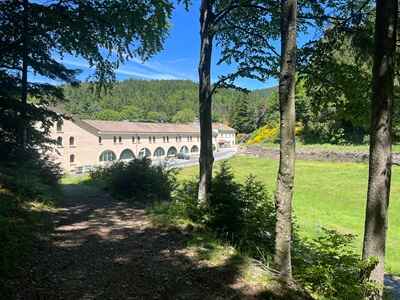 Here are some important figures of the Cistercian order
Here are some important figures of the Cistercian order
Saint Bernard of Clairvaux (1090-1153): Cistercian monk and mystic, Bernard of Clairvaux is one of the most prominent figures of the 12th century. As abbot of the Abbey of Clairvaux, he played a central role in the reform of the Cistercian order and contributed to its expansion throughout Europe. His theological and mystical writings, as well as his involvement in the theological debates of his time, have left a lasting legacy in Christian spirituality.
Aelred of Rievaulx (1109-1167): Cistercian monk and abbot of the Abbey of Rievaulx, Aelred is best known for his spiritual and theological writings, which address topics such as spiritual friendship, charity, and the contemplative life. His works, including "On Spiritual Friendship" and "The Contemplative Life," are still studied and appreciated for their spiritual depth and practical wisdom.
Thomas Merton (1915-1968): 20th-century Trappist Cistercian monk, Thomas Merton is famous for his writings on monastic life, spirituality, and interreligious dialogue. His works, such as "The Mountain of Signs" and "Life in This World," have inspired generations of readers seeking meaning and spiritual truth. Merton was also a passionate advocate for peace and social justice, and his commitment to non-violence and solidarity with the oppressed continues to resonate in today's world.
These three figures illustrate the diversity and richness of the Cistercian order over the centuries, as well as its profound impact on Christian spirituality and society in general. As Cistercian monks, they embodied the values of simplicity, prayer, and work, offering inspiring examples of a life devoted to the service of God and humanity.
***

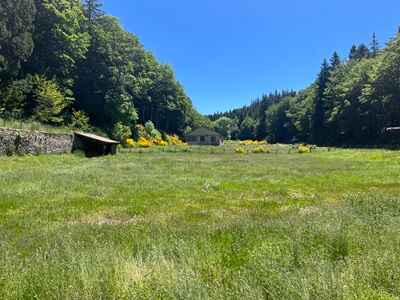 Robert Louis Stevenson at the Abbey of Notre Dame des Neiges: an unforgettable meeting
Robert Louis Stevenson at the Abbey of Notre Dame des Neiges: an unforgettable meeting
In September 1878, while traveling through the Cevennes accompanied by his faithful donkey Modestine, the Scottish writer Robert Louis Stevenson was captivated by the majestic silhouette of the Abbey of Notre Dame des Neiges. Intrigued, he decided to cross the gates of this isolated monastery, far from all agitation, for a meeting that would forever mark his journey. To his great surprise, Stevenson was welcomed with warmth and simplicity that contrasted with the austerity of the place. The Trappist monks, accustomed to solitude, offered him hospitality with genuine kindness. Stevenson was offered lodging and food, and he was quickly integrated into the peaceful life of the monastic community.
Immersed in the heart of monastic life, Stevenson was fascinated by the rigor and discipline that prevailed within the abbey. He observed with wonder the regular prayers, the manual work of the monks, and the calming silence that enveloped the places. At the same time, he discovered the splendor of the surrounding landscapes, wild and grand, which stimulated his imagination and nourished his inspiration as a writer.
From his stay at the Abbey of Notre Dame des Neiges, Stevenson drew a poignant account entitled "Travels with a Donkey in the Cevennes." Through his sensitive words, he pays tribute to the warm welcome of the monks, the striking beauty of the landscapes, and his deep reflections on life, faith, and nature. Stevenson's passage through the abbey leaves an indelible mark in the history of the monastery. His account contributes to making the abbey shine beyond the borders of Ardeche and attracts many visitors in search of serenity and spirituality. Thus, the improbable meeting between the Scottish writer and the monastic community of Notre Dame des Neiges endures in memory, witnessing the richness of human exchanges and the profound impact they can have on our lives.
***
 The first half of the 20th century was a period of prosperity for the abbey. The community of monks grew, and the abbey became an important center of religious and spiritual life in Ardeche. However, starting in the 1970s, the number of monks began to decline, as in many other abbeys in Europe. The traditional monastic life, with its demands for prayer and work, attracted fewer and fewer young people.
The first half of the 20th century was a period of prosperity for the abbey. The community of monks grew, and the abbey became an important center of religious and spiritual life in Ardeche. However, starting in the 1970s, the number of monks began to decline, as in many other abbeys in Europe. The traditional monastic life, with its demands for prayer and work, attracted fewer and fewer young people.
In 2022, faced with the declining number of monks and the aging of the community, it was decided to close the Abbey of Notre Dame des Neiges. This was a difficult and painful decision, but it had become necessary to ensure the site's longevity. The abbey has been entrusted to a community of Cistercian nuns from the Abbey of Boulaur in Ariege. These nuns, who share the same spirituality as the Trappist monks, continue the monastic life at Notre Dame des Neiges. They also welcome visitors and pilgrims, thus contributing to the preservation of the legacy of this unique place.
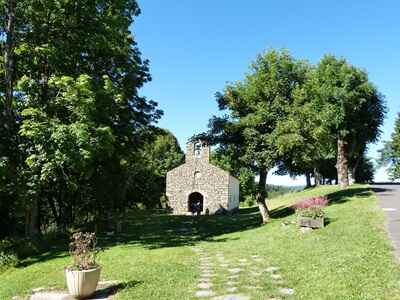 The Abbey of Notre Dame des Neiges is a place of peace and reflection. The monastery is open to visitors who can explore the abbey church, the cloister, the gardens, and the shop of handmade products. The abbey is also an important pilgrimage site, especially for Catholics who come to reflect on the relics of Blessed Charles de Foucauld.
The Abbey of Notre Dame des Neiges is a place of peace and reflection. The monastery is open to visitors who can explore the abbey church, the cloister, the gardens, and the shop of handmade products. The abbey is also an important pilgrimage site, especially for Catholics who come to reflect on the relics of Blessed Charles de Foucauld.
The residents of Ales and Nîmes searching for mushrooms in the woods of the Abbey of Notre Dame des Neiges.
The woods surrounding the Abbey of Notre Dame des Neiges in Ardeche are teeming with edible mushrooms. Porcini, chanterelles, and other delicacies attract Ales and Nîmes residents every year, who are avid foragers and fine gourmets. The tradition of mushroom foraging in the woods of the abbey is ancient. As early as the 19th century, the inhabitants of the surrounding villages came here to find something to enrich their tables.
The Abbey of Notre Dame des Neiges is located about 1.5 hours from Ales and 2 hours from Nîmes, making it easily accessible for a gourmet getaway in nature. The woods around the Abbey of Notre Dame des Neiges are situated in a preserved and wild environment. Mushroom foraging takes place there in respect for nature and the rules in force. It is also possible to reach the abbey by train to La Bastide Saint Laurent les Bains (La Bastide-Puylaurent) and then walk 3 km along the GR7 & GR72.
Former holiday hotel with a garden along the Allier, L'Etoile Guest House is located in La Bastide-Puylaurent between Lozere, Ardeche, and the Cevennes in the mountains of Southern France. At the crossroads of GR®7, GR®70 Stevenson Path, GR®72, GR®700 Regordane Way, GR®470 Allier River springs and gorges, GRP® Cevenol, Ardechoise Mountains, Margeride. Numerous loop trails for hiking and one-day biking excursions. Ideal for a relaxing and hiking getaway.
Copyright©etoile.fr